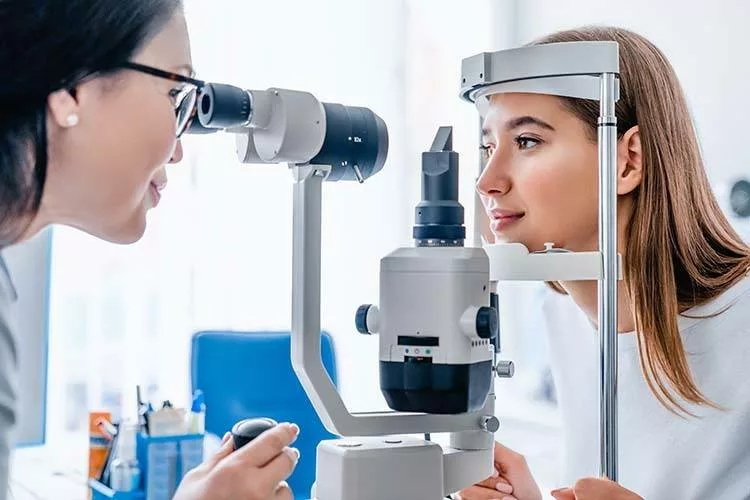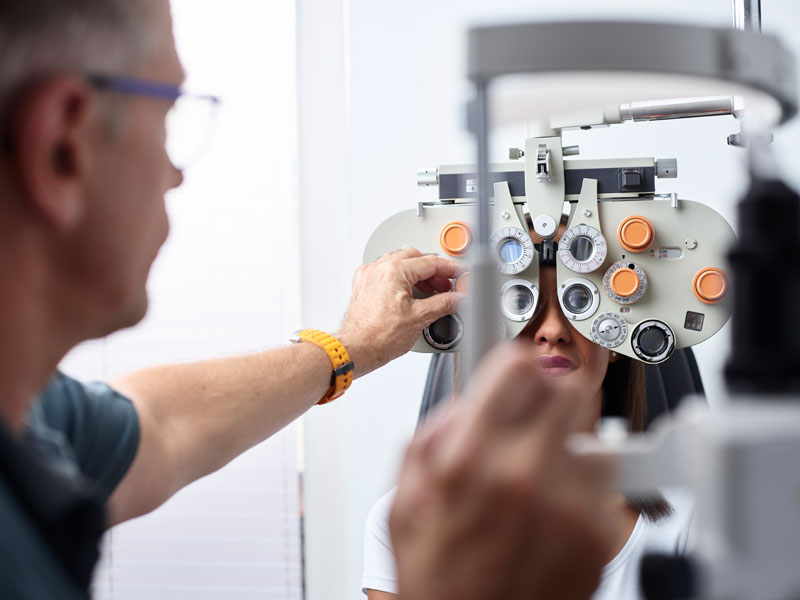Leading Factors to Visit an Optometrist Chino for Your Eye Health
Leading Factors to Visit an Optometrist Chino for Your Eye Health
Blog Article
Exploring the current Technological Innovations in Optometry and What They Mean for Eye Doctors
From the accuracy of Optical Coherence Tomography to the nuanced insights offered by AI-driven analysis tools, these advancements are setting new standards in individual assessment and therapy. As these developments permeate the technique, optometrists are faced with the challenge of embracing these devices to boost patient end results.
Technologies in Diagnostic Devices
Advancing the field of optometry, technologies in analysis devices have revolutionized the means eye treatment experts assess and identify eye conditions and visual problems. The previous decade has actually seen considerable technical developments, making it possible for more thorough and precise examinations. Optical Comprehensibility Tomography (OCT), for instance, gives high-resolution cross-sectional pictures of the retina, permitting the early detection of diseases such as glaucoma and age-related macular deterioration. This non-invasive imaging method has ended up being important in modern optometric method.
Another key development is the intro of innovative corneal topography systems, which map the surface area curvature of the cornea with accuracy. These tools are specifically useful for fitting contact lenses and detecting corneal disorders. In addition, electronic retinal imaging has transformed standard ophthalmoscopy, offering comprehensive, scenic views of the retina that help with comprehensive visual evaluations.
The advancement of wavefront aberrometry has actually also been important, allowing the analysis of refractive mistakes with unequaled precision (Eye Doctor Optometrist). This innovation aids in personalizing rehabilitative lenses and improving medical results for refractive surgical procedures. Jointly, these analysis developments empower eye doctors to supply exceptional client treatment, guaranteeing very early intervention and customized treatment techniques, ultimately improving aesthetic health outcomes
AI in Individual Management
Building on the structure of advanced analysis devices, the consolidation of synthetic intelligence (AI) in client monitoring represents a transformative jump for optometry. AI systems are progressively utilized to enhance effectiveness, accuracy, and personalization in individual care.
In addition, AI-driven platforms help with structured client interactions and management procedures. Automated scheduling, virtual assessments, and individualized follow-up strategies not only improve person fulfillment but additionally enhance time management for experts. These systems can triage individuals based on the necessity of their conditions, making certain that those in critical demand receive prompt focus.
In addition, AI enhances decision-making by providing eye doctors with evidence-based recommendations and treatment paths. By integrating data from electronic wellness documents, AI tools supply insights that notify medical decisions, minimizing the danger of errors and boosting person outcomes. As AI proceeds to develop, its function in individual administration will likely increase, improving the landscape of optometric care.
Advances in Retinal Imaging
In the realm of optometry, retinal imaging has actually seen amazing technical improvements that are boosting analysis capabilities and person care. Innovations such as Optical Comprehensibility Tomography (OCT) and fundus photography have actually revolutionized exactly how eye doctors visualize and examine the retina.
Boosted imaging techniques like OCT angiography are more refining analysis accuracy. Opticore Optometry. Such advancements help with the recognition of minute retinal modifications that might symbolize condition progression.
Additionally, innovations in synthetic intelligence are boosting retinal imaging by enabling computerized evaluation of large datasets. These systems help eye doctors in determining patterns a sign of pathology, thereby improving diagnostic precision and performance. Jointly, these innovations are transforming retinal imaging right into a foundation of contemporary eye treatment, boosting end results and expanding therapeutic opportunities.
Teleoptometry's Growing Duty
Teleoptometry is significantly becoming an important part of eye care, driven by developments in electronic interaction and diagnostic tools. This is especially helpful in rural and underserved areas where accessibility to specialized eye treatment is frequently minimal.
The integration of synthetic intelligence (AI) further improves teleoptometry, allowing the evaluation of aesthetic data and helping in the discovery of eye conditions such as glaucoma and diabetic person retinopathy. AI-powered algorithms can rapidly translate intricate imaging data, offering eye doctors with useful insights that bolster clinical decision-making.
Additionally, teleoptometry supports connection of treatment with smooth assimilation with digital wellness documents (EHRs), enabling optometrists to maintain extensive individual backgrounds. When consulting with various professionals., this makes certain that individuals obtain tailored and consistent care also.
Despite these benefits, obstacles stay, consisting of ensuring data protection and handling individual assumptions. However, teleoptometry stands for a substantial stride towards even more easily accessible, effective, and patient-centered eye care. As technology progresses, its role is poised to increase further.

Future Trends in Eye Treatment
A myriad of ingenious trends is established to improve the future of eye care, driven by technical innovations and the evolving needs of clients. One considerable trend is the integration of expert system (AI) in diagnostics, which assures to enhance the accuracy and effectiveness of eye exams. AI algorithms can analyze huge amounts of data from retinal photos, potentially discovering conditions like diabetic person click here now retinopathy and glaucoma earlier than standard methods.
Furthermore, individualized medicine is acquiring grip in optometry, with hereditary testing educating personalized therapy plans. This approach aims to optimize patient outcomes by customizing treatments to individual genetic accounts. Wearable innovation, such as clever get in touch with lenses, is additionally imminent, supplying real-time monitoring of intraocular stress or glucose levels, thus supplying continuous insights right into systemic and eye health and wellness.
The fostering of increased truth (AR) and virtual reality (VIRTUAL REALITY) in training and client education is an additional emerging trend. These technologies supply immersive experiences that can boost understanding and abilities both for people and eye doctors. As these trends evolve, eye doctors should stay abreast of technical improvements to supply advanced treatment, making Visit This Link certain better patient outcomes and contentment in the dynamic landscape of eye treatment.
Final Thought

Jointly, these diagnostic advancements empower optometrists to provide superior patient care, making sure very early intervention and customized treatment strategies, inevitably enhancing visual health outcomes.

As these innovations continue to develop, eye doctors should adapt and include them into practice, eventually maximizing process performance and raising the criterion of eye treatment provided to individuals.
Report this page